Jianyue Xie
Learning Invariant Representation via Contrastive Feature Alignment for Clutter Robust SAR Target Recognition
Apr 04, 2023
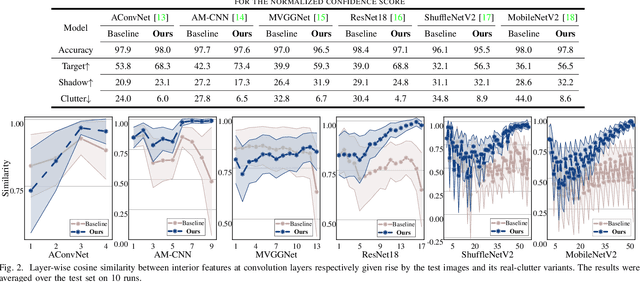


Abstract:The deep neural networks (DNNs) have freed the synthetic aperture radar automatic target recognition (SAR ATR) from expertise-based feature designing and demonstrated superiority over conventional solutions. There has been shown the unique deficiency of ground vehicle benchmarks in shapes of strong background correlation results in DNNs overfitting the clutter and being non-robust to unfamiliar surroundings. However, the gap between fixed background model training and varying background application remains underexplored. Inspired by contrastive learning, this letter proposes a solution called Contrastive Feature Alignment (CFA) aiming to learn invariant representation for robust recognition. The proposed method contributes a mixed clutter variants generation strategy and a new inference branch equipped with channel-weighted mean square error (CWMSE) loss for invariant representation learning. In specific, the generation strategy is delicately designed to better attract clutter-sensitive deviation in feature space. The CWMSE loss is further devised to better contrast this deviation and align the deep features activated by the original images and corresponding clutter variants. The proposed CFA combines both classification and CWMSE losses to train the model jointly, which allows for the progressive learning of invariant target representation. Extensive evaluations on the MSTAR dataset and six DNN models prove the effectiveness of our proposal. The results demonstrated that the CFA-trained models are capable of recognizing targets among unfamiliar surroundings that are not included in the dataset, and are robust to varying signal-to-clutter ratios.
Scattering Model Guided Adversarial Examples for SAR Target Recognition: Attack and Defense
Sep 11, 2022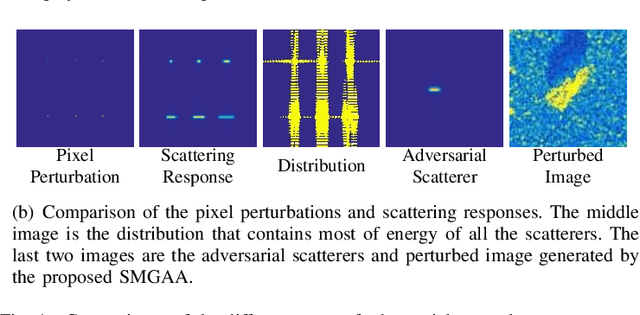
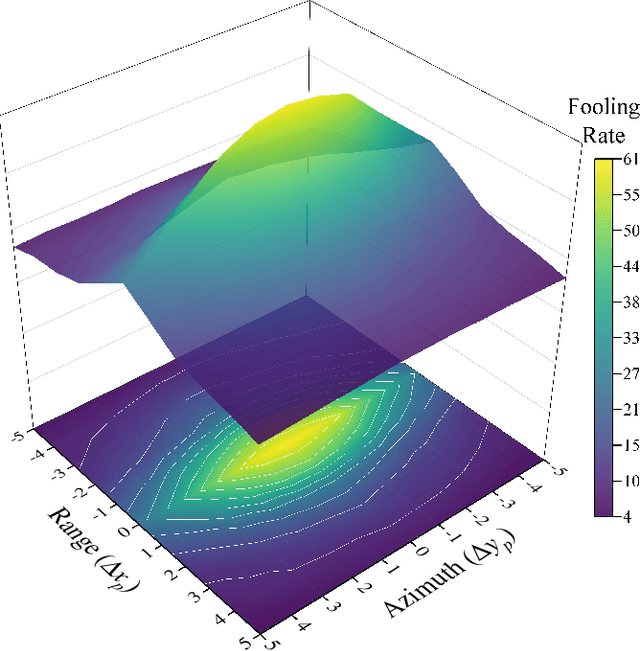
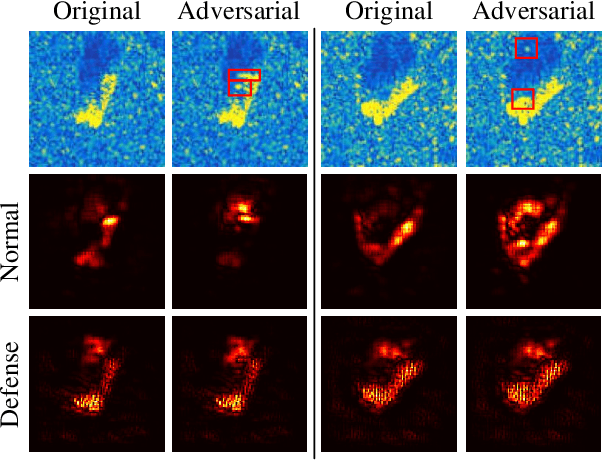
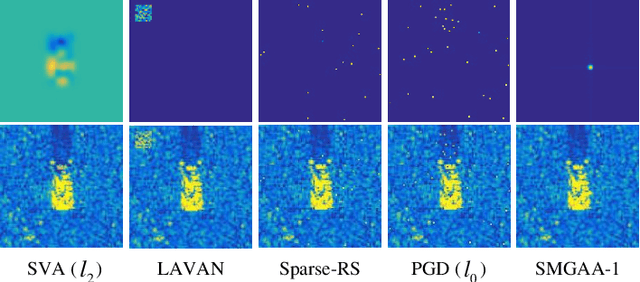
Abstract:Deep Neural Networks (DNNs) based Synthetic Aperture Radar (SAR) Automatic Target Recognition (ATR) systems have shown to be highly vulnerable to adversarial perturbations that are deliberately designed yet almost imperceptible but can bias DNN inference when added to targeted objects. This leads to serious safety concerns when applying DNNs to high-stake SAR ATR applications. Therefore, enhancing the adversarial robustness of DNNs is essential for implementing DNNs to modern real-world SAR ATR systems. Toward building more robust DNN-based SAR ATR models, this article explores the domain knowledge of SAR imaging process and proposes a novel Scattering Model Guided Adversarial Attack (SMGAA) algorithm which can generate adversarial perturbations in the form of electromagnetic scattering response (called adversarial scatterers). The proposed SMGAA consists of two parts: 1) a parametric scattering model and corresponding imaging method and 2) a customized gradient-based optimization algorithm. First, we introduce the effective Attributed Scattering Center Model (ASCM) and a general imaging method to describe the scattering behavior of typical geometric structures in the SAR imaging process. By further devising several strategies to take the domain knowledge of SAR target images into account and relax the greedy search procedure, the proposed method does not need to be prudentially finetuned, but can efficiently to find the effective ASCM parameters to fool the SAR classifiers and facilitate the robust model training. Comprehensive evaluations on the MSTAR dataset show that the adversarial scatterers generated by SMGAA are more robust to perturbations and transformations in the SAR processing chain than the currently studied attacks, and are effective to construct a defensive model against the malicious scatterers.
 Add to Chrome
Add to Chrome Add to Firefox
Add to Firefox Add to Edge
Add to Edge